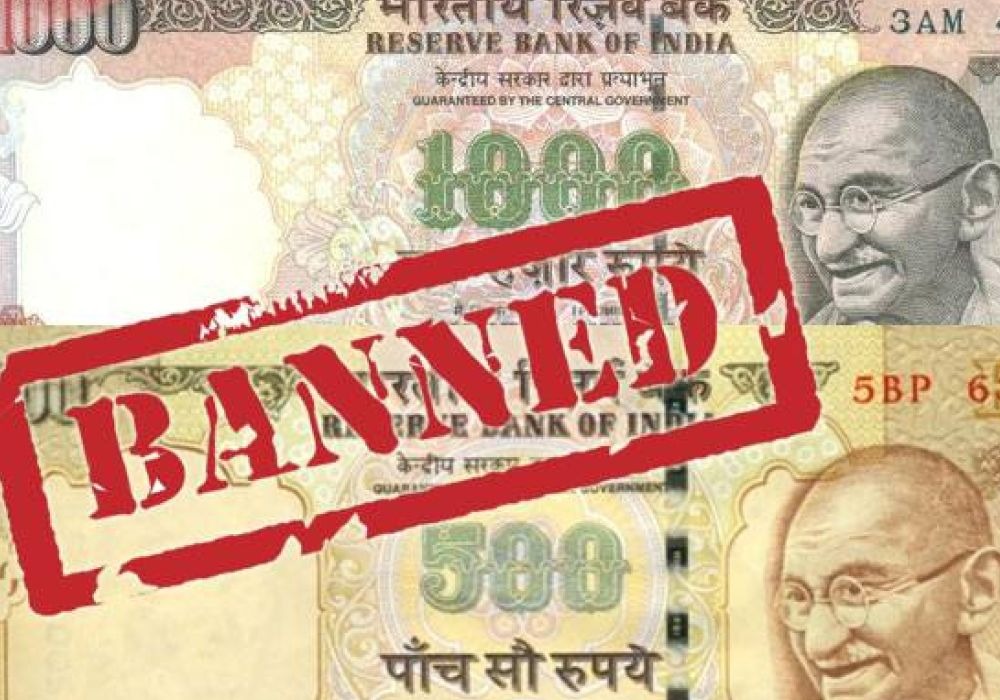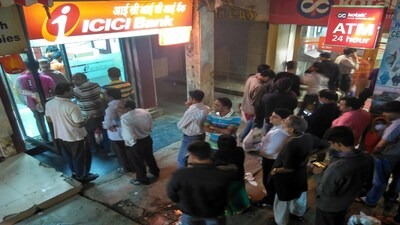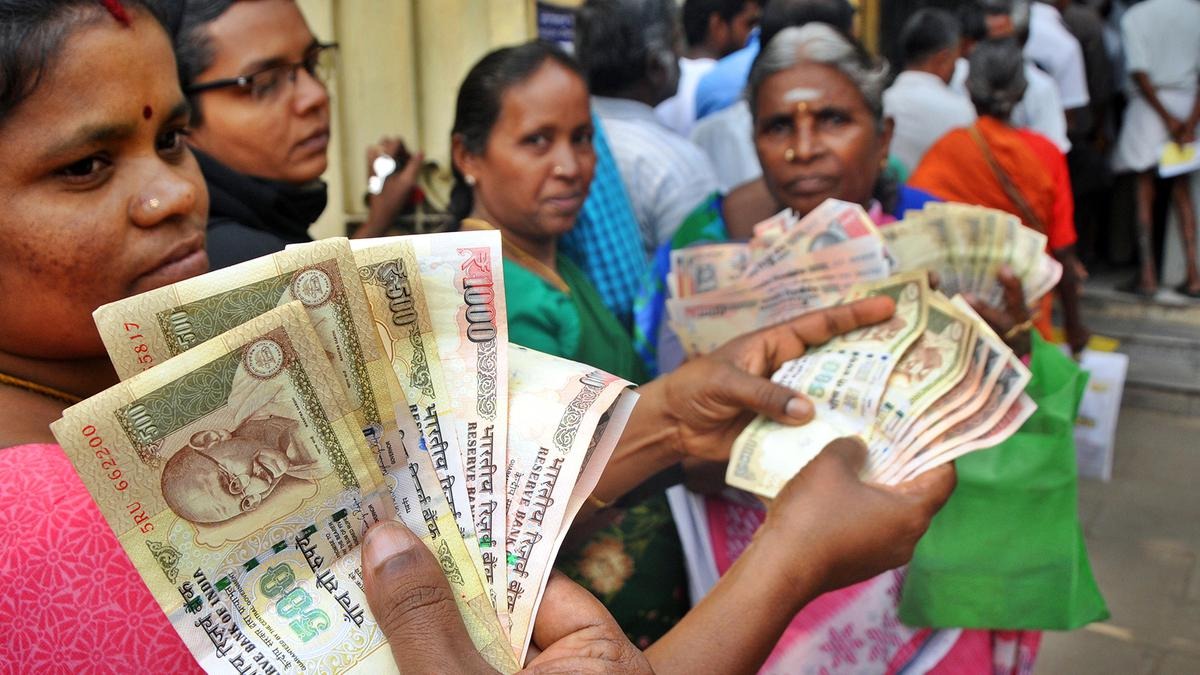Introduction
On 8 November 2016 at 8:15 PM IST, the Government of India announced that existing ₹500 and ₹1,000 banknotes of the Mahatma Gandhi Series would cease to be legal tender from midnight, and that new ₹500 and ₹2,000 banknotes would be issued. The stated objectives were to curb black money, counterfeit currency, corruption, and terror financing, and to push formalization and digital payments.

Background and Rationale
- Policy aims were framed around four pillars: tackling undeclared (black) cash holdings, breaking counterfeit and terror-financing networks, widening the tax base, and accelerating the shift toward a less-cash, more-digital economy.
- The move followed years of concern about high-currency dependence, tax evasion, and the use of forged high-denomination notes; it came alongside broader efforts to expand banking access and digital infrastructure.
Scope of the Move
- Currency affected: All ₹500 and ₹1,000 notes of the older Mahatma Gandhi Series (constituting roughly 86% of currency in circulation by value) lost legal tender status from midnight of 8 November 2016.
- Replacement: Introduction of new ₹2,000 and redesigned ₹500 notes (Mahatma Gandhi New Series).
- Deposit and exchange window: Citizens could deposit old notes in bank and post office accounts up to 30 December 2016; over-the-counter exchange was initially permitted with evolving limits and then curtailed.
Immediate Operational Measures (Nov 2016–Mar 2017)
- Withdrawal caps: Temporary limits on ATM withdrawals and bank cash withdrawals to manage liquidity; these ceilings were gradually eased and fully lifted by March 2017.
- Temporary exemptions: Old notes were accepted for limited periods at government hospitals, fuel stations, public transport ticketing, utilities, and certain government counters to ease essential transactions.
- Liquidity logistics: Currency printing presses ramped up production; ATM recalibration was undertaken nationwide for new note sizes/denominations.
Short-term Effects
- Cash crunch: Queueing at banks/ATMs and cash shortages were widespread for weeks, affecting daily commerce, especially in cash-reliant informal sectors, small businesses, and rural areas.
- Economic activity: Near-term slowdown in consumption-intensive segments and cash-dependent supply chains; markets saw volatility and some employment disruption in the informal economy.
- Public behavior shift: Sharp uptick in adoption of digital payment modes (UPI, cards, wallets) and bank account usage, aided by prior financial inclusion drives and mobile penetration.
Outcomes and Assessments
- Returned currency: The overwhelming majority of demonetized notes were eventually deposited into the banking system (public analyses often cite ~99% returned), implying black wealth largely did not vanish in cash form and may have been laundered or declared.
- Tax base and formalization: Authorities reported higher tax return filings and detected anomalies from deposit trails, enabling follow-up scrutiny; sustained formalization was supported later by GST rollout and growing digital rails.
- Counterfeit and terror finance: Seizures of fake notes of old series became moot; counterfeiters later attempted to forge new designs in smaller quantities. Security feature upgrades and data trails increased barriers and detection, though not eliminating risks.
- Digital payments: Digital transactions spiked during the cash crunch and continued to scale afterward, driven by UPI’s rapid growth, merchant QR adoption, and incentives—marking a structural shift in payments behavior.
- GDP and employment effects: Analysts recorded a temporary growth dip and job losses in segments of the informal economy; the extent and duration varied across sectors and states.
Legal and Policy Context
- Legal basis: The executive acted under the RBI Act provisions to withdraw specified series/denominations as legal tender; subsequent litigation tested procedural and proportionality aspects, while the policy remained in effect during the window.
- Follow-on policies: The push for formalization continued via GST (2017), e-invoicing, improved analytics on financial flows, and incentives for digital acceptance.
Key Dates and Milestones
- 8 November 2016: Announcement at 8:15 PM; notes cease to be legal tender from midnight.
- 9 November–30 December 2016: Deposit window; evolving exchange/withdrawal limits.
- January–March 2017: Phased relaxation and removal of withdrawal caps; liquidity conditions normalize.
Why It Mattered
- It was one of the largest monetary interventions in independent India, touching households and firms across the country in a single stroke.
- It accelerated the digitization of payments and expanded the use of formal financial channels, generating data trails that enabled tax and compliance actions.
- It also exposed the economic and social costs of sudden cash contraction in a cash-intensive economy, informing future design of shock policies.
Lasting Legacy
- Payments ecosystem: A durable surge in UPI and QR-based acceptance transformed retail payments, bill pay, and person-to-person transfers.
- Compliance architecture: Greater use of analytics on deposits and transactions increased the state’s visibility into financial behavior, complementing broader formalization efforts.
- Policy debate: Demonetization remains contested—supporters emphasize formalization, digitization, and compliance gains; critics highlight the near-total return of cash, informal sector stress, and a transitory growth shock.
Quick Facts
- Affected denominations: Old-series ₹500 and ₹1,000.
- Share of currency impacted: Approximately 86% by value.
- Replacement: New ₹500 and ₹2,000 notes introduced.
- Deposit deadline: 30 December 2016 (with limited special provisions beyond).
- Withdrawal limits: Imposed post-announcement, fully lifted by March 2017.

Conclusion
Demonetization in 2016 was a transformational—yet highly disruptive—attempt to recast India’s cash-dominant economy toward greater formalization and digital transactions. It rapidly expanded the financial system’s data footprint and accelerated payment digitization, even as it imposed short-term costs on cash-dependent sectors and ultimately recovered most of the cash into the banking system, fueling an enduring national debate over its efficacy and design.








Leave feedback about this